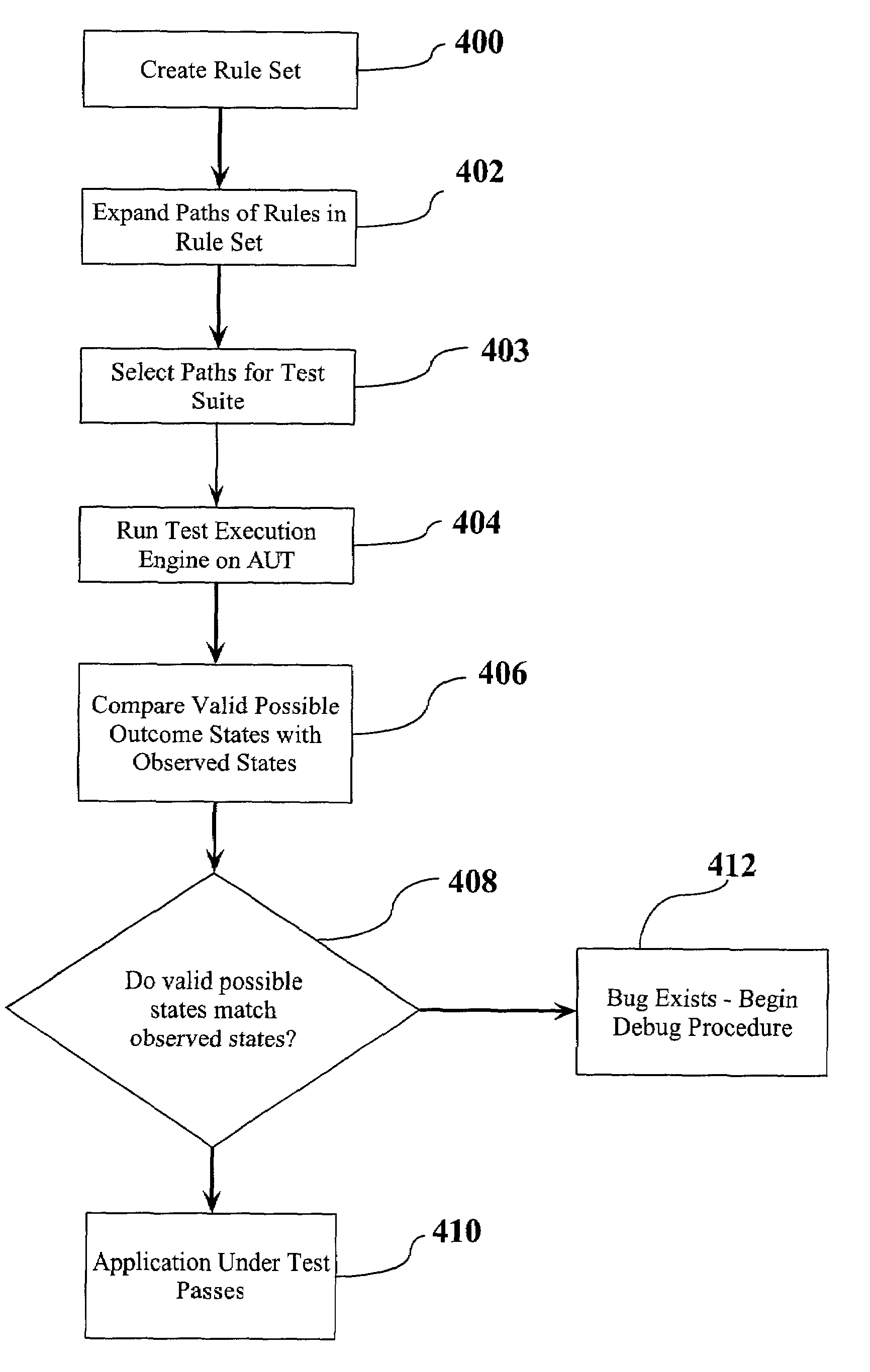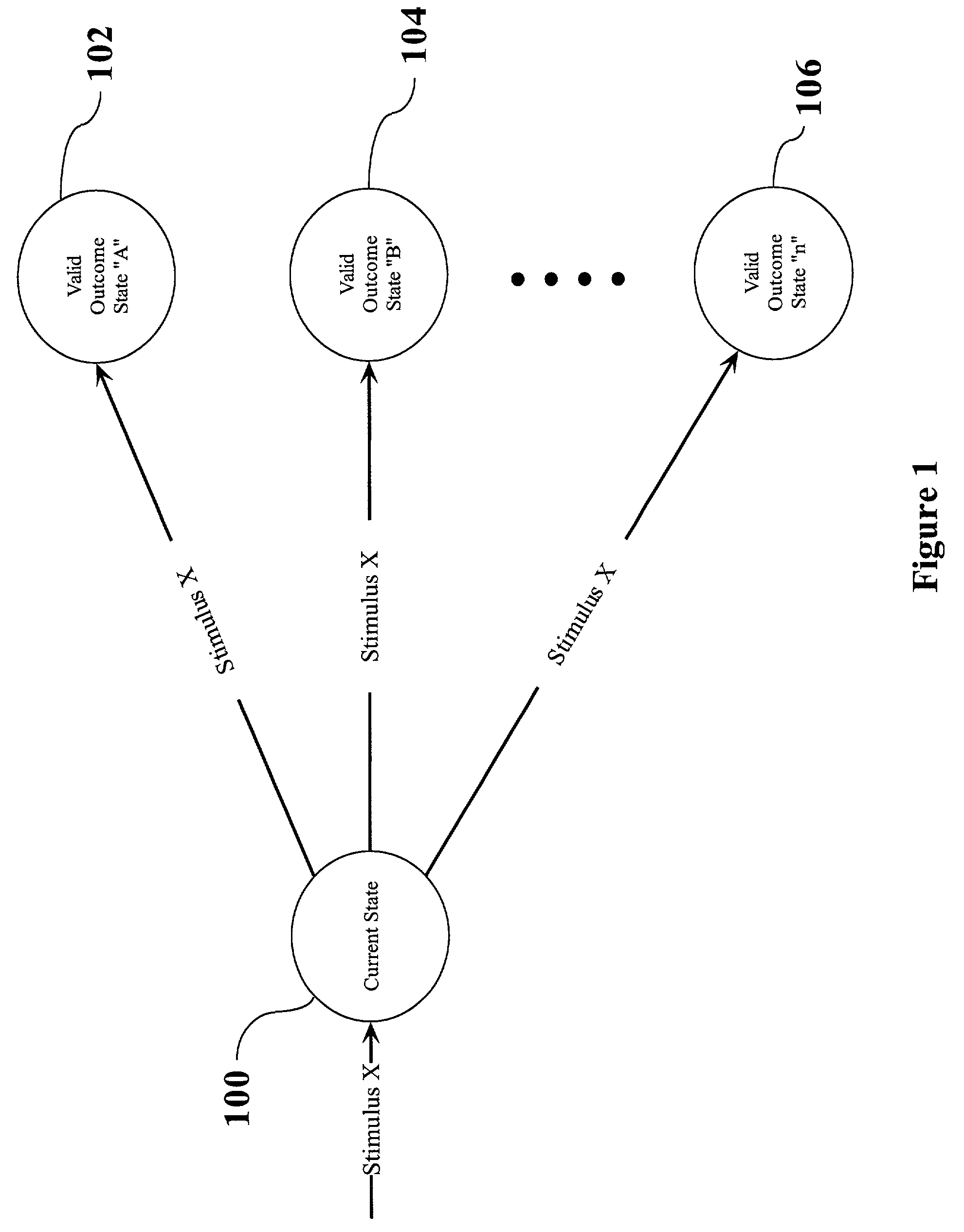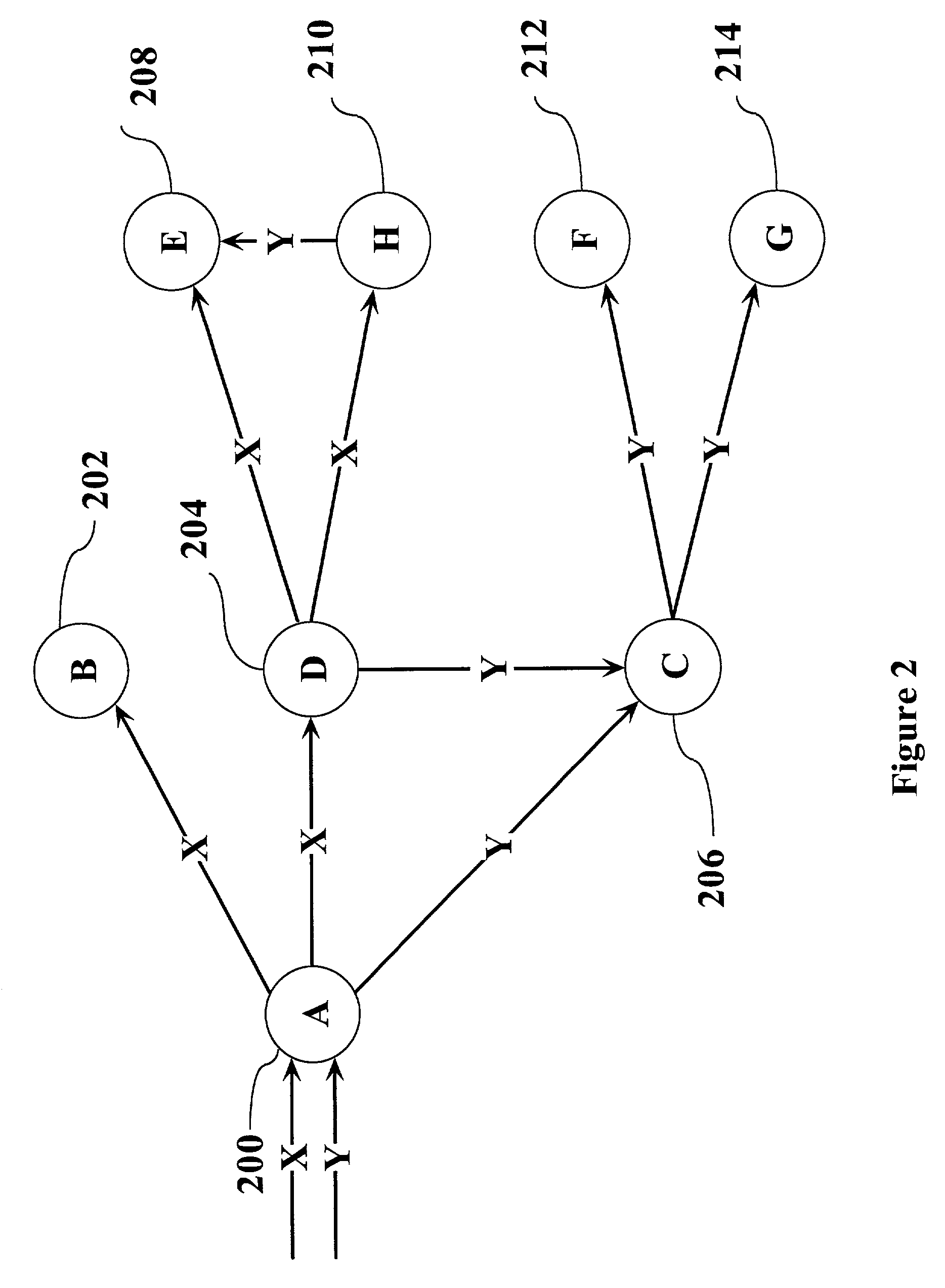Method, system, and computer program product for automated test generation for non-deterministic software using state transition rules
a technology of state transition rules and test generation methods, applied in the field of software testing, can solve problems such as inefficient use of testing resources, significant challenges of non-deterministic software, and dilemmas
- Summary
- Abstract
- Description
- Claims
- Application Information
AI Technical Summary
Benefits of technology
Problems solved by technology
Method used
Image
Examples
Embodiment Construction
[0023]The present invention involves the performing of four basic steps in connection with testing of an application: first, a set of rules is created. Each rule represents a stimulus to the AUT and includes a precondition for its application and models the valid outcome states that may result from applying its stimulus in a particular state of the AUT; second, the rules are executed to expand (enumerate / explore) all paths associated with all the outcome states and a data structure incorporating the path information is created; third, a subset of all of the paths enumerated is selected, taking into consideration user defined coverage criteria, to form the test suite; and fourth, a test execution engine is run which runs the test suite and applies its sequences of stimuli to the AUT, compiles a sequence of observed states, and compares the list of valid possible outcomes with the sequence of observed states. As a result of this comparison, bugs can be identified.
[0024]FIG. 1 is a dir...
PUM
 Login to View More
Login to View More Abstract
Description
Claims
Application Information
 Login to View More
Login to View More - R&D
- Intellectual Property
- Life Sciences
- Materials
- Tech Scout
- Unparalleled Data Quality
- Higher Quality Content
- 60% Fewer Hallucinations
Browse by: Latest US Patents, China's latest patents, Technical Efficacy Thesaurus, Application Domain, Technology Topic, Popular Technical Reports.
© 2025 PatSnap. All rights reserved.Legal|Privacy policy|Modern Slavery Act Transparency Statement|Sitemap|About US| Contact US: help@patsnap.com



